Joan Miró Spanish, 1893-1983
c. 1970
13.3h x 6.3w inches
Further images
-
(View a larger image of thumbnail 1
)

-
(View a larger image of thumbnail 2
)
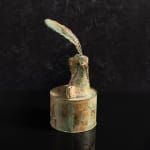
-
(View a larger image of thumbnail 3
)
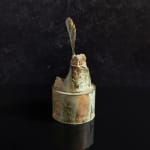
-
(View a larger image of thumbnail 4
)
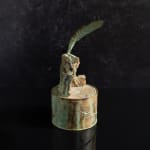
-
(View a larger image of thumbnail 5
)

-
(View a larger image of thumbnail 6
)
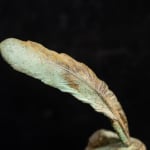
-
(View a larger image of thumbnail 7
)
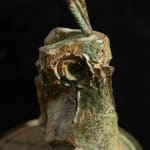
-
(View a larger image of thumbnail 8
)
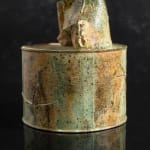
-
(View a larger image of thumbnail 9
)
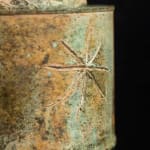
-
(View a larger image of thumbnail 10
)

-
(View a larger image of thumbnail 11
)
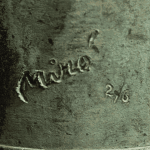
Miró's sculptures were the crowning achievement of his late career. Although he had created surrealist object paintings during the late 1920s and 1930s, it was not until a decade later, while he was living in Palma, Montroig and Barcelona during the Second World War, that he considered making large free-standing forms.
Conceived in 1970, Personnage à la plume encapsulates Miró's spontaneous and playful approach to sculpture, incorporating objects found , or found objects, in a radically abstracted depiction of the work's titular subject. A far cry from a representation of reality, Characterà la plume, like much of the artist's work, is Miró's attempt to stimulate the imagination through a different kind of visual poetry. Despite the durable nature of the raw materials used, Miró breathes movement and life into the figure through the delicate balance of the feather and the central structure.
In 1972, David Sylvester observed that Miró was a self-made sculptor, not a born one, having developed his talent for three-dimensional form whilst in his fifties. It was perhaps for this reason, Sylvester explained, that Miró had a "tendency to put more confidence in the given shapes of found objects than in his power to invent forms in the round" (D. Sylvester, Miró Bronzes, exh. cat . , Hayward Gallery, London, 1972, p. 15).
Two years later, the artist stated in an interview with a French newspaper, "To paint, to sculpt, to etch, is maybe to give form to a myth, to produce a new reality from a given material, from a physical thrust that forces a gesture to be carried and placed in the world. The real suddenly appears from this struggle. Nothing is foreign to painting, to etching, to sculpture: one can work with anything - everything can be useful. If I frequently integrate the objects as they are, with raw materials, it is not to obtain a plastic effect but by necessity. It is in order to produce the shock of one reality against another…I need to walk on my earth, to live among my own, because everything that is popular is necessary for my work". (quoted in R.-J. Moulin, L'Humanité , May 25, 1974).
Literature
F. Basile, Joan Miró, Bologna, 1997, p. 232 (another proof illustrated in colors, p. 233).
EF Miró and PO Chapel, Joan Miró, Sculptures. Catalog raisonné, 1928-1982 , Paris, 2006, p. 190, no. 189 (another proof illustrated in color).










